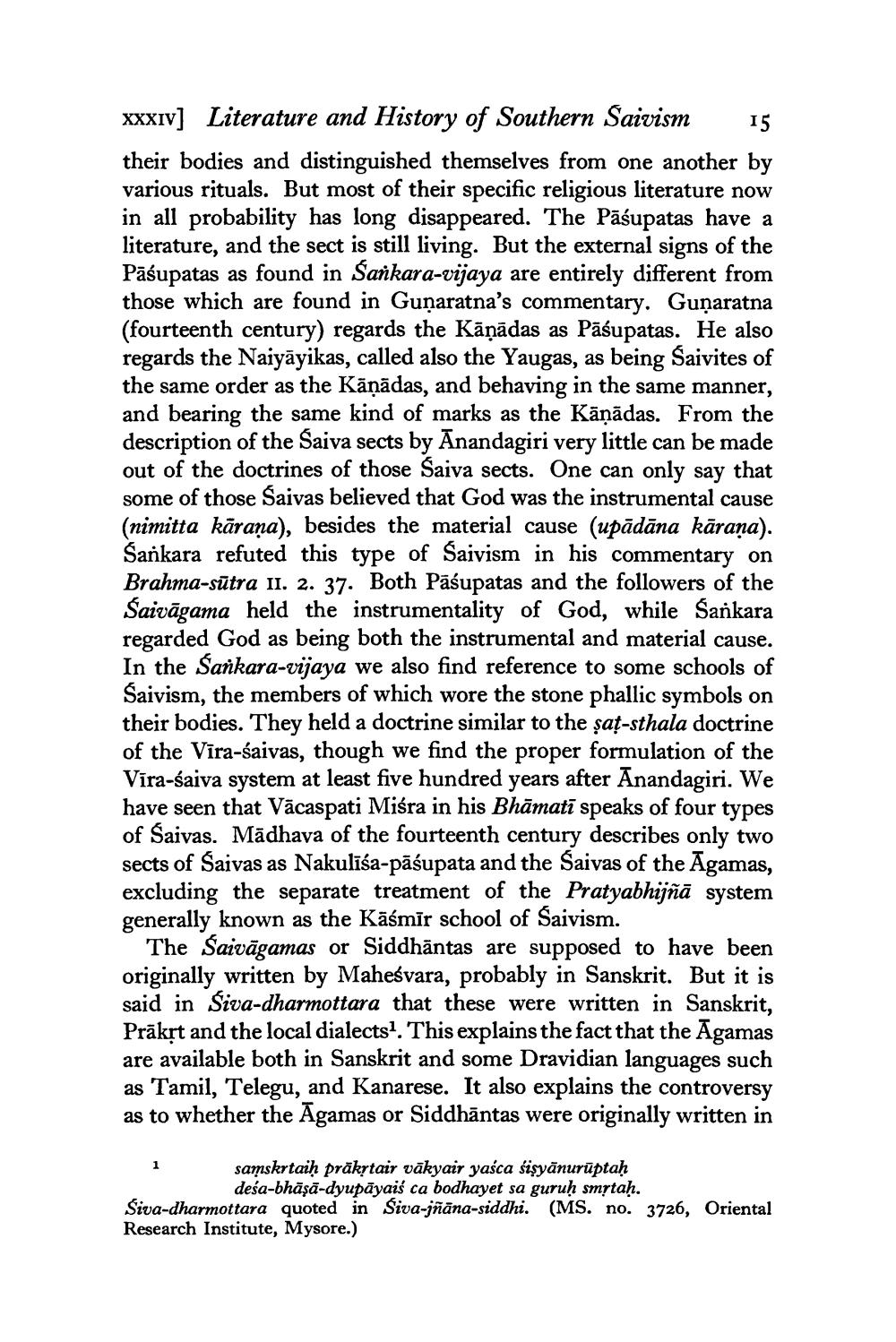________________
xxxiv] Literature and History of Southern Saivism 15 their bodies and distinguished themselves from one another by various rituals. But most of their specific religious literature now in all probability has long disappeared. The Pāśupatas have a literature, and the sect is still living. But the external signs of the Pāśupatas as found in Sankara-vijaya are entirely different from those which are found in Gunaratna's commentary. Gunaratna (fourteenth century) regards the Kāņādas as Pāśupatas. He also regards the Naiyāyikas, called also the Yaugas, as being Saivites of the same order as the Kāņādas, and behaving in the same manner, and bearing the same kind of marks as the Kāņādas. From the description of the Saiva sects by Anandagiri very little can be made out of the doctrines of those Saiva sects. One can only say that some of those Saivas believed that God was the instrumental cause (nimitta kārana), besides the material cause (upādāna kārana). Sankara refuted this type of Saivism in his commentary on Brahma-sūtra II. 2. 37. Both Pāśupatas and the followers of the Saivāgama held the instrumentality of God, while Sankara regarded God as being both the instrumental and material cause. In the Sankara-vijaya we also find reference to some schools of Saivism, the members of which wore the stone phallic symbols on their bodies. They held a doctrine similar to the șaț-sthala doctrine of the Vīra-śaivas, though we find the proper formulation of the Vīra-saiva system at least five hundred years after Anandagiri. We have seen that Vācaspati Miśra in his Bhāmatī speaks of four types of Saivas. Mādhaya of the fourteenth century describes only two sects of Saivas as Nakulīša-pāśupata and the Saivas of the Agamas, excluding the separate treatment of the Pratyabhijñā system generally known as the Kāśmīr school of Saivism.
The Saivāgamas or Siddhāntas are supposed to have been originally written by Maheśvara, probably in Sanskrit. But it is said in Siva-dharmottara that these were written in Sanskrit, Prākst and the local dialects. This explains the fact that the Agamas are available both in Sanskrit and some Dravidian languages such as Tamil, Telegu, and Kanarese. It also explains the controversy as to whether the Āgamas or Siddhāntas were originally written in
samskrtaih prākytair vākyair yasca sisyānurūptaḥ
deśa-bhāṣā-dyupāyaiś ca bodhayet sa guruh smrtah. Siva-dharmottara quoted in Siva-jñāna-siddhi. (MS. no. 3726, Oriental Research Institute, Mysore.)




